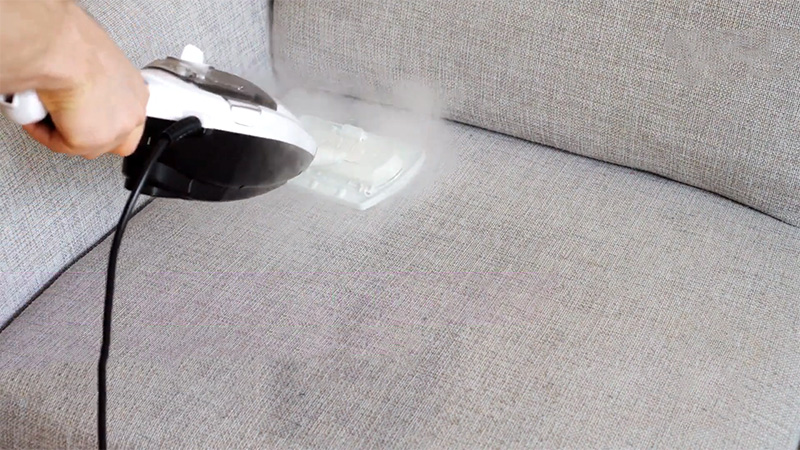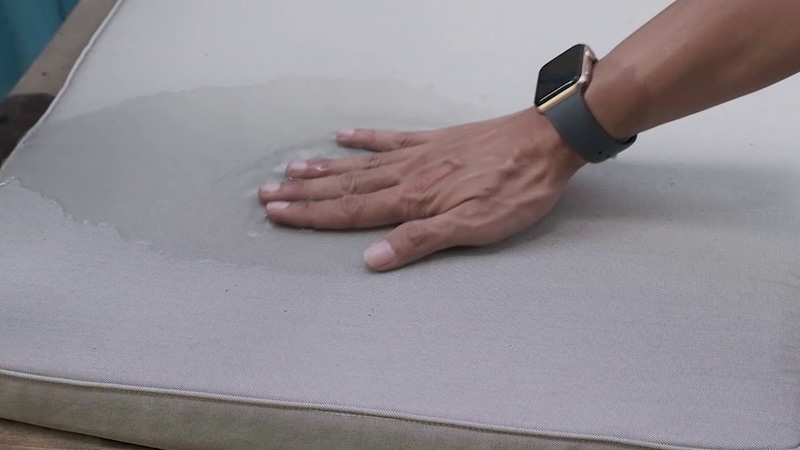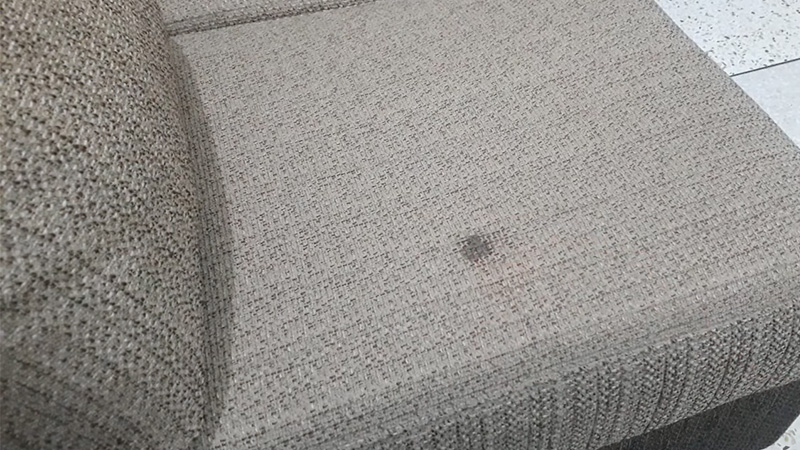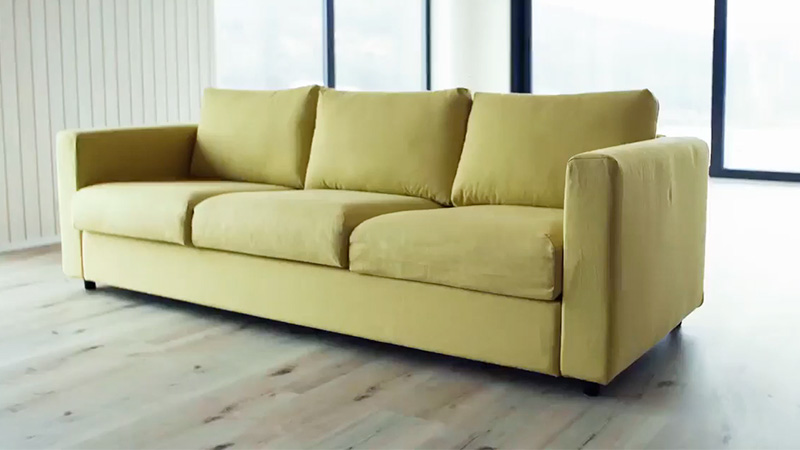Olefin fabric is prized for its durability and resistance to moisture, making it a popular choice for upholstery, outdoor furniture, and carpets. Proper cleaning is essential to maintain its longevity and appearance.
This guide will walk you through effective techniques to clean Olefin fabric, from routine care to tackling specific stains and issues.
By following these steps, you’ll be able to preserve the vibrant look and resilience of your Olefin fabric, ensuring it continues to enhance your living spaces for years to come.
Whether it’s everyday dirt, spills, or stubborn stains, this guide provides practical solutions for keeping your Olefin fabric looking its best.

Understanding Olefin Fabric
Olefin, also known as polypropylene, is a popular synthetic fiber renowned for its durability and resistance to moisture, stains, and fading. It’s widely used in upholstery, outdoor furniture, and carpets.
Manufactured through a process of polymerization, Olefin exhibits a smooth texture, similar to natural fibers like wool. Its inherent hydrophobic nature makes it highly water-resistant, making it an excellent choice for outdoor applications.
Additionally, Olefin’s resistance to mildew and mold growth adds to its suitability for humid environments. While it may not possess the softness of some natural fabrics, Olefin compensates with its affordability, easy maintenance, and longevity.
Its versatility and resilience make Olefin a practical choice for various applications, particularly in settings where durability and resistance to environmental elements are paramount.
How to Clean Olefin Fabric?
Cleaning Olefin fabric requires a gentle approach to ensure its durability and longevity. Olefin is a synthetic fiber known for its resistance to stains, moisture, and mildew.
Follow these steps to effectively clean Olefin fabric:
Materials Needed:
- Mild detergent or fabric cleaner
- Soft-bristle brush or clean cloth
- Bucket or basin
- Water
- Soft sponge or cloth
- A vacuum cleaner with a brush attachment
- Mild bleach
- White vinegar
Step-by-Step Guide:
Read the Care Label
Before starting the cleaning process, take a moment to carefully read the care label attached to the Olefin fabric. Look for any specific instructions or warnings provided by the manufacturer. These instructions may include temperature limits for water, recommendations for cleaning agents, or any special precautions.
Remove Loose Debris
Using a vacuum cleaner with a brush attachment, gently go over the surface of the Olefin fabric. Pay close attention to seams, creases, and any folds where dirt and debris tend to accumulate.
This initial step is crucial in preventing particles from becoming embedded in the fabric during the cleaning process.
Prepare Cleaning Solution
Fill a bucket or basin with lukewarm water. Add a small amount of mild detergent or a specialized fabric cleaner designed for synthetic fibers.
Be sure to follow the manufacturer’s instructions regarding the proper dilution ratio. Avoid using strong or abrasive chemicals, as they can potentially damage the Olefin fabric.
Test in an Inconspicuous Area
Select a small, inconspicuous area of the fabric to perform a spot test. Apply a small amount of the cleaning solution and gently agitate it with a cloth or sponge.
Wait a few minutes and carefully inspect the spot for any signs of discoloration or adverse reactions. This precaution ensures that the cleaning solution is safe for the fabric.
Gently Scrub the Fabric
Dip a soft-bristle brush or clean cloth into the prepared cleaning solution. Wring out any excess liquid to prevent over-saturation.
Begin gently scrubbing the Olefin fabric in a circular motion, focusing on areas with visible stains or soiling. Take care not to apply excessive pressure, as this could potentially damage the fibers.
Rinse Thoroughly
Using a clean sponge or cloth, rinse the fabric thoroughly with plain water. Make sure to remove all traces of the cleaning solution. Any residue left behind can attract dirt and lead to further staining over time.
Blot Excess Moisture
After rinsing, use a clean, absorbent cloth to blot excess moisture from the fabric. Avoid rubbing or wringing the fabric, as this can cause unnecessary friction and potentially damage the fibers. Take your time to ensure that the fabric is damp but not overly saturated.
Air Dry
Allow the Olefin fabric to air dry in a well-ventilated area. Avoid exposing it to direct sunlight or placing it near heat sources, as this can lead to discoloration or potential damage. If possible, hang the fabric to promote even drying and prevent any wrinkles from forming.
Check for Stubborn Stains
Inspect the fabric for any remaining stubborn stains. If necessary, you can create a mild bleach solution following the manufacturer’s instructions.
Apply it carefully to the specific areas with a clean cloth, and always perform a spot test beforehand in an inconspicuous area to ensure it won’t cause any damage.
Address Odors
If there are lingering odors, you can create a mixture of equal parts water and white vinegar. Lightly mist the fabric and allow it to air dry. The vinegar will help neutralize any unwanted smells without leaving a strong scent behind.
Final Vacuum
Once the fabric is completely dry, you can use a vacuum cleaner with a brush attachment to gently go over the surface.
This helps restore the texture and removes any remaining particles that may have settled on the fabric during the drying process. Be sure to use a light touch to avoid any potential damage.
Dealing with Specific Stains or Issues

Dealing with specific stains or issues on Olefin fabric requires targeted approaches.
Here are some common scenarios and how to address them:
Grease or Oil Stains
When dealing with grease or oil stains on Olefin fabric, it’s crucial to act swiftly. Begin by blotting the stain with a clean, white cloth. This helps absorb as much of the grease or oil as possible.
Next, apply a small amount of dish soap or a specialized stain remover designed for oil-based stains.
Gently blot the stain, starting from the outer edges and working towards the center to prevent spreading. Finally, rinse the area with water and blot it dry. This process helps remove the oily residue without damaging the fabric.
Food and Beverage Stains
Food and beverage stains are common, but they can be effectively addressed on Olefin fabric. Start by blotting the stain to remove any excess material. Then, prepare a solution of mild detergent and water. Gently scrub the stain using a clean cloth or sponge.
Be sure to work in a circular motion, which can help lift the stain from the fibers. Rinse thoroughly with clean water to remove any detergent residue, and blot the area dry.
This method helps eliminate food and beverage stains without compromising the integrity of the fabric.
Ink or Marker Stains
Ink or marker stains can be stubborn, but with the right approach, they can be successfully treated. Begin by applying rubbing alcohol to a clean cloth.
Gently blot the stain, starting from the outer edges and moving towards the center. The alcohol helps dissolve the ink, making it easier to lift from the fabric. Rinse the area with water and blot it dry.
This process should gradually remove the stain without causing damage to the Olefin fabric.
Blood Stains
When dealing with blood stains, it’s important to use cold water to prevent the proteins in the blood from setting. Start by blotting the stain with a clean cloth dampened with cold water.
This helps dilute and lift the blood from the fabric. Next, mix a solution of cold water and mild detergent. Gently scrub the stain, being careful not to use hot water, as it can cause the blood to set.
Rinse thoroughly with cold water to remove any remaining traces of detergent, and blot the area dry. This method is effective in removing blood stains from Olefin fabric.
Mildew or Mold
Mildew or mold growth can occur in humid environments, but it can be addressed with the right cleaning solution. Create a mixture of equal parts water and white vinegar, which acts as a natural antifungal agent.
Gently scrub the affected area using a soft brush or cloth. This solution not only removes the visible mold but also helps prevent future growth.
Rinse the fabric thoroughly with clean water to remove any vinegar residue, and allow it to air dry in a well-ventilated area.
Pet Urine
Dealing with pet urine stains requires prompt action to prevent odors and discoloration. Begin by blotting the stain with a clean, white cloth to absorb as much moisture as possible.
Then, mix a solution of equal parts water and white vinegar, which helps neutralize the odor and disinfect the area.
Gently scrub the stain using a clean cloth or sponge. Rinse thoroughly with water to remove any vinegar residue, and blot the area dry. This method effectively addresses pet urine stains on Olefin fabric.
Fading or Sun Damage
Fading or sun damage can occur over time due to prolonged exposure to sunlight. To prevent further damage, consider using curtains or covers to shield the fabric from direct sunlight.
Additionally, apply a fabric protector spray that offers UV resistance. This extra layer of protection helps maintain the fabric’s color and integrity, even in sun-exposed areas.
Pilling
Pilling, the formation of fabric bumps or balls, is a natural occurrence with regular use. To address this, use a fabric shaver or a blunt razor to gently remove the pills.
Take care not to press too hard, as this can damage the fabric. Afterward, vacuum the fabric using a brush attachment to remove any loose fibers. This process revitalizes the fabric’s texture, leaving it looking refreshed.
Deep Cleaning for Heavily Soiled Olefin

Deep cleaning of heavily soiled Olefin fabric requires a more intensive approach.
Here’s a step-by-step guide to effectively deep clean your Olefin fabric:
Materials Needed:
- A vacuum cleaner with a brush attachment
- Mild detergent or specialized fabric cleaner for synthetic fibers
- Soft-bristle brush or scrub brush
- Bucket or basin
- Water
- White vinegar
- Stain-specific treatments
- Upholstery or carpet cleaning machine
Step-by-Step Guide:
Vacuum Thoroughly
Begin by using a vacuum cleaner with a brush attachment to thoroughly vacuum the heavily soiled Olefin fabric. This will remove loose dirt, dust, and debris from the surface, preparing it for deep cleaning.
Pre-Treat Stains
For specific stains or heavily soiled areas, consider using stain-specific treatments or pre-treatment products. Follow the instructions provided on the product’s label and allow them to sit for the recommended time before proceeding.
Prepare Cleaning Solution
Fill a bucket or basin with lukewarm water and add a moderate amount of mild detergent or a specialized fabric cleaner designed for synthetic fibers. Adhere to the product’s instructions for the correct dilution ratio.
Test Cleaning Solution
Before applying the cleaning solution to the entire fabric, perform a spot test in an inconspicuous area to ensure it doesn’t cause any discoloration or damage to the Olefin fabric.
Scrub the Fabric
Dip a soft-bristle brush or scrub brush into the cleaning solution. Gently scrub the heavily soiled Olefin fabric in a circular motion, focusing on stained or soiled areas. It’s important to use a light touch to avoid damaging the fabric’s fibers.
Rinse Thoroughly
Rinse the fabric thoroughly with clean water to remove the cleaning solution and any loosened dirt or grime. Use a clean cloth or sponge to blot and rinse until the water runs clear.
Address Stubborn Stains
If any stubborn stains persist after the initial cleaning, you may need to repeat the cleaning process or use specialized stain removers. Always follow the instructions provided with the stain remover and take your time to ensure the stain is thoroughly treated.
Odor Removal
To eliminate any lingering odors, create a mixture of equal parts water and white vinegar. Lightly mist the fabric and allow it to air dry. The vinegar will help neutralize odors without leaving a strong scent.
Upholstery/Carpet Cleaning Machine
For larger or heavily soiled areas, consider using an upholstery or carpet cleaning machine specifically designed for synthetic fabrics. Follow the manufacturer’s instructions for operation and use the appropriate cleaning solution.
Air Dry Thoroughly
Allow the Olefin fabric to air dry in a well-ventilated area, away from direct sunlight or heat sources. Hanging the fabric can promote even drying. It is essential to ensure that the fabric is completely dry before using it again.
Tips for Long-Term Care

Ensuring the long-term care of Olefin fabric involves consistent attention and specific practices.
Here are detailed tips for maintaining Olefin fabric over an extended period:
Regular Vacuuming
Regular vacuuming is the foundation of Olefin fabric maintenance. It’s important to use a vacuum cleaner with a brush attachment to effectively remove loose dirt, dust, and debris. Pay special attention to high-traffic areas and any creases or folds in the fabric.
Promptly Address Spills
Quick action is crucial when spills occur. Blotting with a clean, white cloth immediately helps prevent the spill from soaking deeper into the fabric. Avoiding rubbing is essential, as it can spread the stain and potentially damage the fibers.
Routine Cleaning
Performing routine cleaning with a mild detergent and water solution helps keep Olefin fabric looking fresh. Dilute the detergent according to its instructions, and use a soft brush or cloth to gently scrub the fabric. Thorough rinsing is important to remove any detergent residue.
Stain Removal
For stubborn stains like grease or ink, using specialized stain treatments or mild solutions tailored to the stain type can be effective. Always test in an inconspicuous area first and carefully follow the product’s instructions.
Prevent Fading
Protecting Olefin fabric from sun exposure is crucial for preventing fading. Utilize curtains, blinds, or UV-resistant window films to reduce direct sunlight. Rearranging furniture periodically can also help distribute wear evenly.
Upholstery Protection
Applying a fabric protector spray designed for synthetic fibers offers an additional layer of defense against stains. This protective barrier can make cleaning spills easier and provide extra peace of mind.
Regularly Brush
For Olefin fabric outdoor furniture or rugs, regular brushing or shaking helps prevent dirt and debris from becoming embedded. This simple step is particularly important in high-traffic areas.
Professional Cleaning
When dealing with larger items or heavily soiled Olefin fabric, professional cleaning services can provide an in-depth and effective solution. Professionals have access to specialized equipment and expertise to revitalize the fabric.
Avoid Harsh Chemicals: Steer clear of harsh chemicals, bleach, or abrasive cleaners. These can damage Olefin fibers. Opt for mild detergents and stain-specific treatments to ensure gentle yet effective cleaning.
Check the Manufacturer’s Recommendations
Always refer to the care label or manufacturer’s recommendations for specific cleaning and maintenance instructions. Each Olefin fabric may have unique characteristics or requirements.
Pet Considerations
For households with pets, regular cleaning is especially important to remove pet hair and prevent odors. Consider using pet-specific stain and odor removers when accidents occur to effectively address any messes.
Storage
When storing Olefin fabric items, ensure they are thoroughly cleaned and completely dry. Store them in a cool, dry location away from direct sunlight to prevent mold growth and fading.
FAQs
How do I clean everyday dirt and dust from Olefin fabric?
Use a vacuum cleaner with a brush attachment to gently remove loose dirt and debris. Regular vacuuming helps prevent dirt from becoming embedded in the fabric.
Can I use bleach to clean Olefin fabric?
It’s best to avoid using bleach on Olefin fabric, as it can potentially damage the fibers. Stick to mild detergents or specialized fabric cleaners designed for synthetic fibers.
What should I do if a spill occurs on Olefin fabric?
Quickly blot the spill with a clean, white cloth to absorb as much liquid as possible. Avoid rubbing, as it can spread the spill. For solid spills, carefully scoop or scrape off the material before blotting.
Can I machine wash Olefin fabric items?
It’s generally recommended to avoid machine washing Olefin fabric, as it can lead to shrinkage or damage. Instead, opt for spot cleaning or professional cleaning services for larger items.
How can I prevent the fading of Olefin fabric due to sunlight exposure?
To prevent fading, use curtains, blinds, or UV-resistant window films to reduce direct sunlight. Additionally, periodically rearrange furniture to ensure even wear and fading.
Wrap Up
Caring for Olefin fabric involves a combination of routine maintenance and targeted stain removal techniques.
By following the steps outlined in this guide, you can effectively clean and preserve the durability and aesthetic appeal of your Olefin fabric. Remember to always start with gentle methods, conducting spot tests when using new cleaning solutions.
Prompt attention to spills and regular vacuuming are fundamental practices. For deeper cleaning, employ mild detergents and consider professional services for heavily soiled items.
With consistent care, your Olefin fabric will not only maintain its vibrant appearance but also continue to offer comfort and functionality for years to come.
Leave a Reply